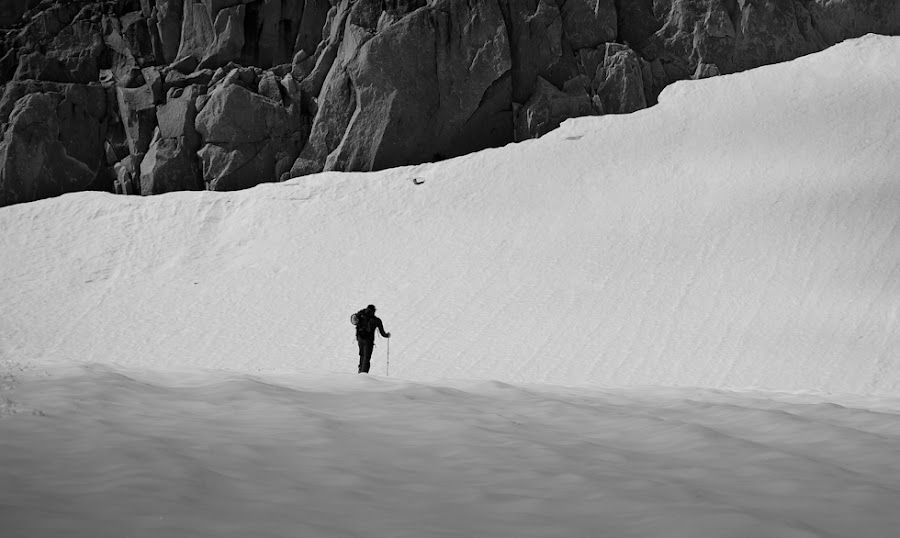It has been a long time since I last posted, since the new year my life has taken some unexpected turns. My good friend, climbing partner, mentor and inspiration in life...Carlyle Norman...died. She was struck by a rock high on a Patagonian spire, she survived for a while but then fell to her death, on January 16th. She came to rest at the foot of Aguja Saint Exupery. The closest place to heaven that I have seen on earth. If you want to read an account of the accident, go to alpinist.com.
This blog site will no longer be the main site in which I share my stories. I might update it from time to time and keep it running -- it ranks well in the search engines -- but I will be posting most of my new material at my site -- joshuaLAVIGNE.com --.
But before I leave, I would like to post a couple more stories. Here are some photos from Jonny Walsh's and my free ascent of Spicy Red Beans and Rice. Located on the west face of the North Howser Tower in the Bugaboos. We did the first free ascent of the route over 2 days in August 2011.
The photos are a mix of Jon Walsh's and mine. We carried Jonny's Canon 5D and my Lumix GF1 on this climb so that we could get some high quality video. A little cumbersome at times but worth it.
 |
| Photo: Jon Walsh Approaching to the base of the route...Sketchy! |
 |
| The summit ridge above the west face of the North Howser Tower |
 |
| Photo: Jon Walsh Attempting too free Young Men on Fire. We bailed after this pitch and continued climbing the Shooting Gallery to access the upper face where we joined Spicy Beans and Rice (SB&R) |
 |
| Photo: Jon Walsh Trying to imitate Peter Croft with the four point stemming. |
 |
| Photo: Jon Walsh Climbing the first 5.10 pitch above the bivy ledges. The Warrior continues up straight and the route SRB&R continues up and right. |
 |
| Jonny leading out in the evening light. The first of several 5.11+ pitches on the climb. |
 |
| Waking up, 8 pitches up below the headwall. |
 |
| Photo: Jon Walsh Getting into the meat of it on the first 5.12 pitch. |
 |
| Photo: Jon Walsh Re-joining the Warrior in the upper corner systems of the Headwall.. A beautiful and well protected 5" crack, |
 |
| The summit! My seventh time to the summit via the west face, it's gotta be pretty good back there : ) |













































